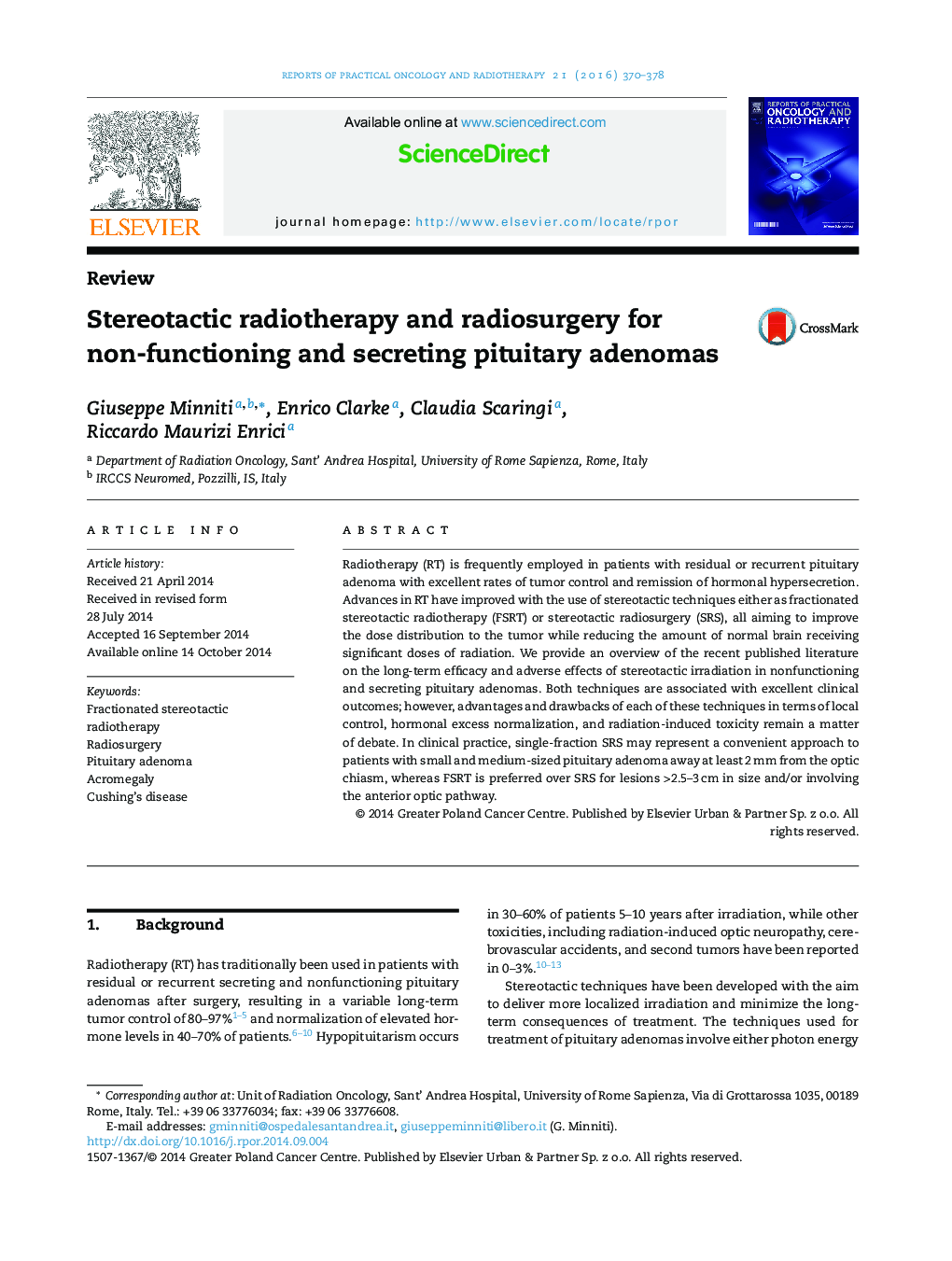| Article ID | Journal | Published Year | Pages | File Type |
|---|---|---|---|---|
| 1854144 | Reports of Practical Oncology & Radiotherapy | 2016 | 9 Pages |
Radiotherapy (RT) is frequently employed in patients with residual or recurrent pituitary adenoma with excellent rates of tumor control and remission of hormonal hypersecretion. Advances in RT have improved with the use of stereotactic techniques either as fractionated stereotactic radiotherapy (FSRT) or stereotactic radiosurgery (SRS), all aiming to improve the dose distribution to the tumor while reducing the amount of normal brain receiving significant doses of radiation. We provide an overview of the recent published literature on the long-term efficacy and adverse effects of stereotactic irradiation in nonfunctioning and secreting pituitary adenomas. Both techniques are associated with excellent clinical outcomes; however, advantages and drawbacks of each of these techniques in terms of local control, hormonal excess normalization, and radiation-induced toxicity remain a matter of debate. In clinical practice, single-fraction SRS may represent a convenient approach to patients with small and medium-sized pituitary adenoma away at least 2 mm from the optic chiasm, whereas FSRT is preferred over SRS for lesions >2.5–3 cm in size and/or involving the anterior optic pathway.
